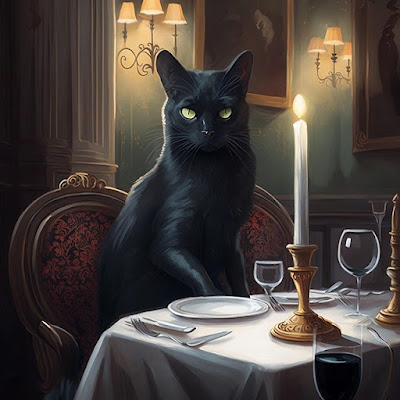Cat Food A Comprehensive Guide
pussycats are obligate herbivores, meaning their diet primarily consists of meat. While they can eat some foods that humans consume, their nutritive requirements are veritably specific. Feeding pussycats the right balance of proteins, vitamins, and minerals is essential to maintaining their health. Then's a detailed companion to the types of food pussycats can eat, their benefits, and implicit pitfalls.
Meat A Primary Source of Nutrition
pussycats can eat utmost cooked flesh, including beef, funk, lemon, and angel. These flesh give essential proteins and amino acids that help maintain muscle health, support growth, and keep their fur healthy. Meat can be prepared in different ways — boiled, grilled, or roasted but it should always be completely cooked to avoid bacterial infections similar as Salmonella or E. coli.
Although wild pussycats frequently consume raw meat and indeed carnage, the meat humans eat can be dangerous to them due to bacterial impurity from tilling surroundings. For this reason, it's always safer to cook the meat before offering it to a domestic cat.
** Chicken and Fish Popular Protein Sources **
funk is an excellent source of protein for pussycats. It's easy to digest and provides essential nutrients similar as vitamins B6 and B12, niacin, and phosphorus. also, funk bones especially soft bones from youngish cravens are easier for pussycats to bite and digest compared to larger bones from beef or angel. Chicken liver is also largely nutritional and can be given in small quantities as an occasional treat.
Fish, particularly salmon, tuna, and sardines, is a favorite among pussycats. It contains omega- 3 adipose acids, which support a healthy fleece, brain function, and common health. It also provides essential nutrients similar as iodine, phosphorus, and vitamins A, E, and D. still, while fish is salutary, it should n't be the main element of a cat’s diet.
Wild pussycats infrequently consume fish, as they generally live in dry surroundings with little access to submarine food sources. A diet that's too high in fish can lead to vitamin and mineral imbalances, particularly a insufficiency in vitamin E, which may beget a condition known as steatitis( inflammation of fat towel). Canned fish, similar as tuna and sardines, can be offered sometimes, but always in temperance.
Dairy Products A Common Misconception
It's a wide belief that pussycats love milk and that it's salutary for them. still, milk and other dairy products can beget digestive problems in adult pussycats. While gibs calculate on their mama ’s milk for nutrition, their capability to digest lactose( the sugar in milk) decreases as they grow aged.
When adult pussycats consume milk, they may develop lactose dogmatism, leading to diarrhea, bloating, and dehydration.However, lactose-free milk
druthers designed for pussycats are available, If a cat enjoys dairy. else, the only liquid they truly need is water.
The pitfalls of rotundity in pussycats
Overfeeding and lack of exercise can lead to rotundity in pussycats, which increases the threat of health problems similar as diabetes, heart complaint, and arthritis. Maintaining a balanced diet with applicable portion sizes is pivotal.
Adipose foods, inordinate treats, and high- calorie diets should be avoided. rather, cat possessors should concentrate on furnishing nutrient-rich food in controlled quantities. Regulating mess times also helps help gluttony and ensures proper digestion.
rotundity is a common issue among precious pussycats in developed countries, analogous to the mortal population. Like humans, fat pussycats face a advanced threat of developing cardiovascular conditions and may have a reduced lifetime.
Types of Beast Diets
creatures gain food in different ways, and their diets can be classified into two main orders
1. Autotrophic organisms , similar as shops, produce their own food through photosynthesis using sun.
2. Heterotrophic organisms , including all creatures, depend on consuming other organisms for aliment.
Among heterotrophs, some creatures feed on shops( beasties), others prey on creatures( herbivores), and some consume both( pets). pussycats, still, are ** true herbivores **. Their digestive system is specifically designed to reuse meat, and they warrant the necessary enzymes to efficiently break down and prize nutrients from factory- grounded foods.
Although pussycats may sometimes nibble on shops or eat small quantities of carbohydrates, they primarily calculate on meat for survival. Their diet must include essential nutrients similar as taurine, an amino acid set up simply in beast apkins. Without enough taurine, pussycats can develop serious health problems, including heart complaint and vision impairment.
furnishing a Balanced Diet for pussycats
To insure a cat receives proper nutrition, its diet should be well- balanced and include
- ** High- quality beast protein **( funk, lemon, beef, angel, or fish)
- ** Essential adipose acids **( set up in fish and flesh)
- ** Vitamins and minerals **( present in organ flesh like liver and order)
- ** Fresh water **( the only necessary liquid for hydration)
marketable cat foods, whether dry kibble or wet mimetic food, are formulated to meet nimble salutary requirements. still, manual refections should be precisely planned to insure pussycats admit all essential nutrients. Consulting a veterinarian can help determine the stylish diet plan grounded on the cat’s age, weight, and health condition.
Conclusion
pussycats have specific salutary conditions that must be met to keep them healthy and active. While they can enjoy a variety of foods, including meat, fish, and some dairy products, their diet must be well- balanced. Overfeeding, inordinate dairy, and an unvaried diet can lead to health issues similar as rotundity, vitamin scarcities, and digestive problems.
Understanding a cat’s nutritive requirements and feeding it meetly ensures a long, healthy, and happy life. By furnishing the right balance of proteins, vitamins, and hydration, cat possessors can help their faves thrive.


Comments
Post a Comment